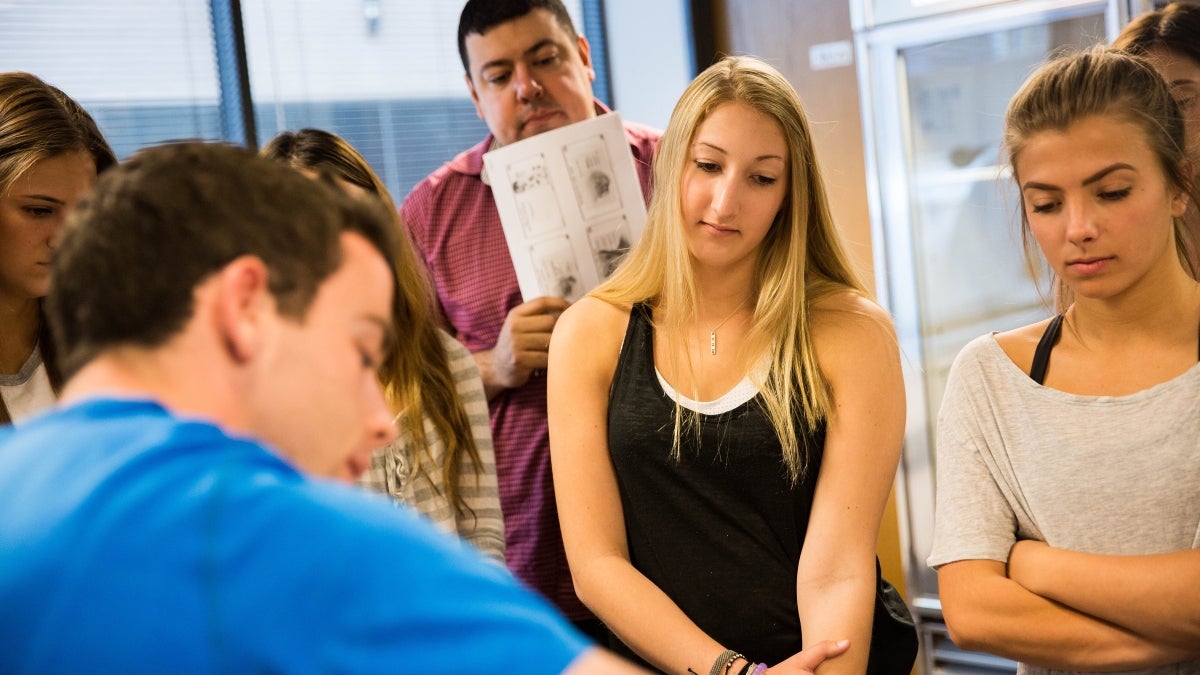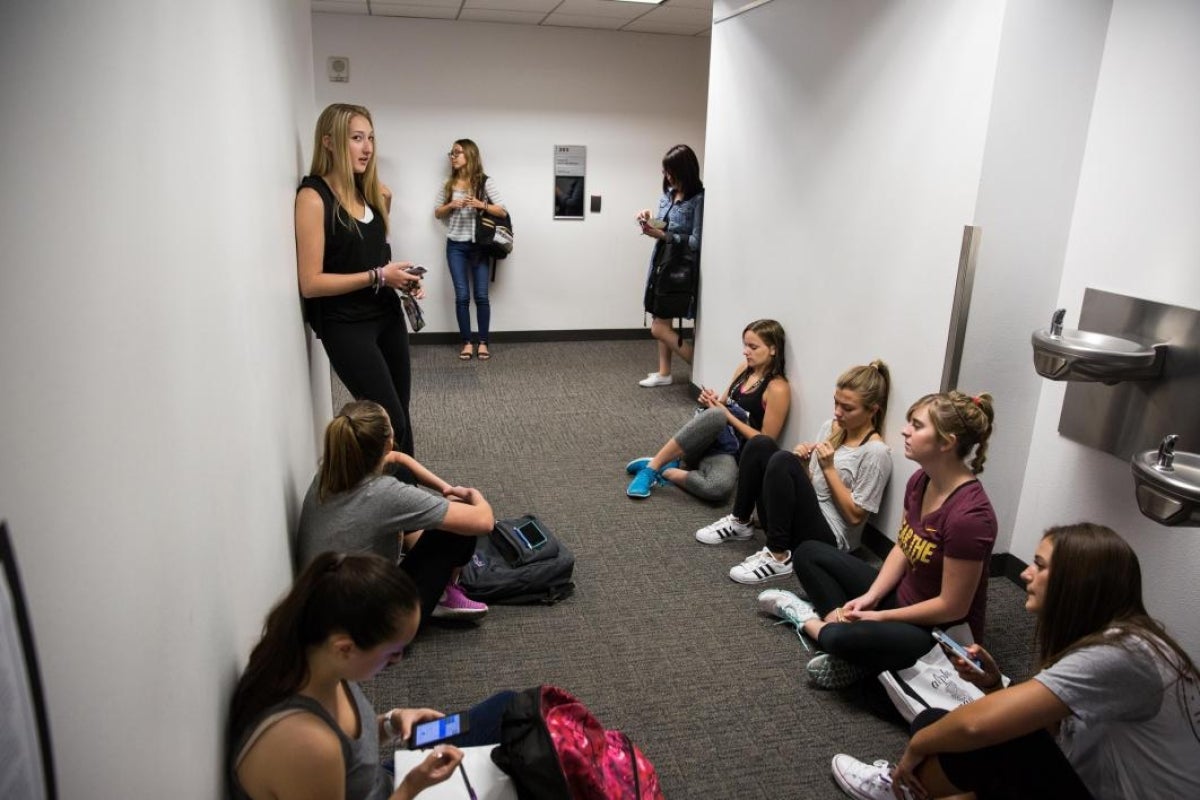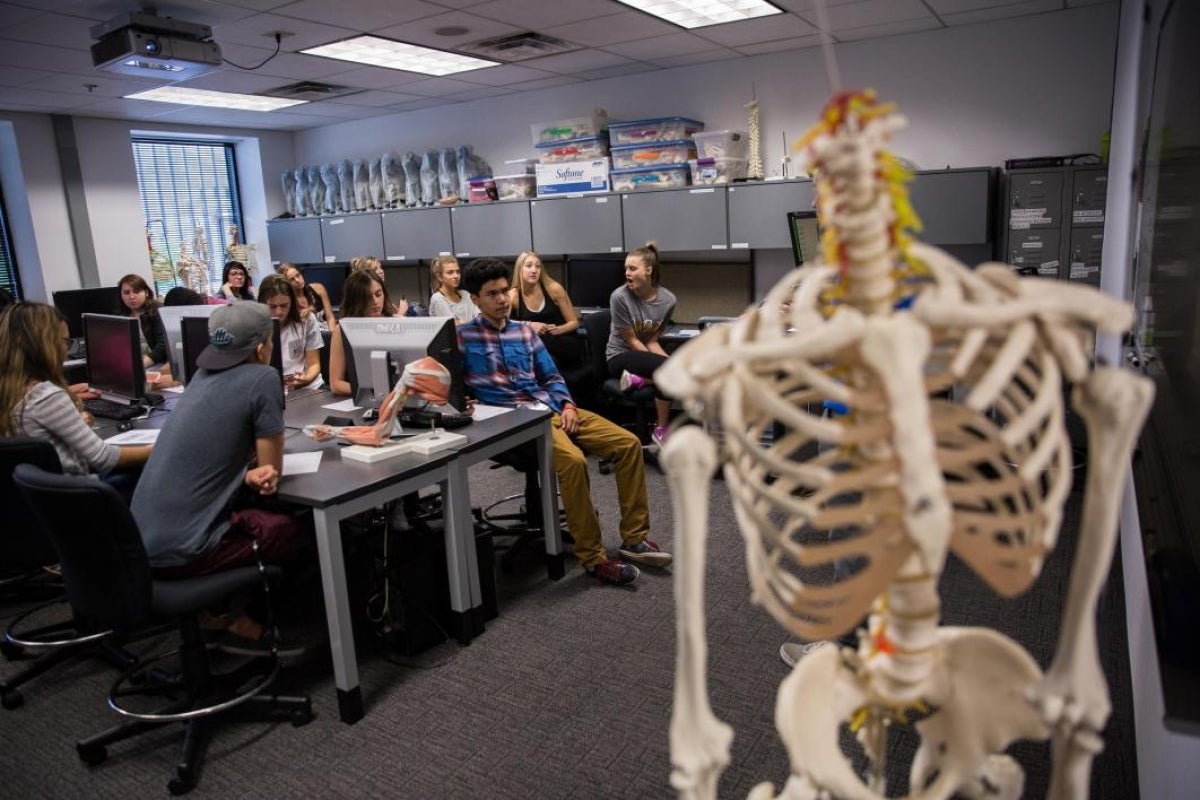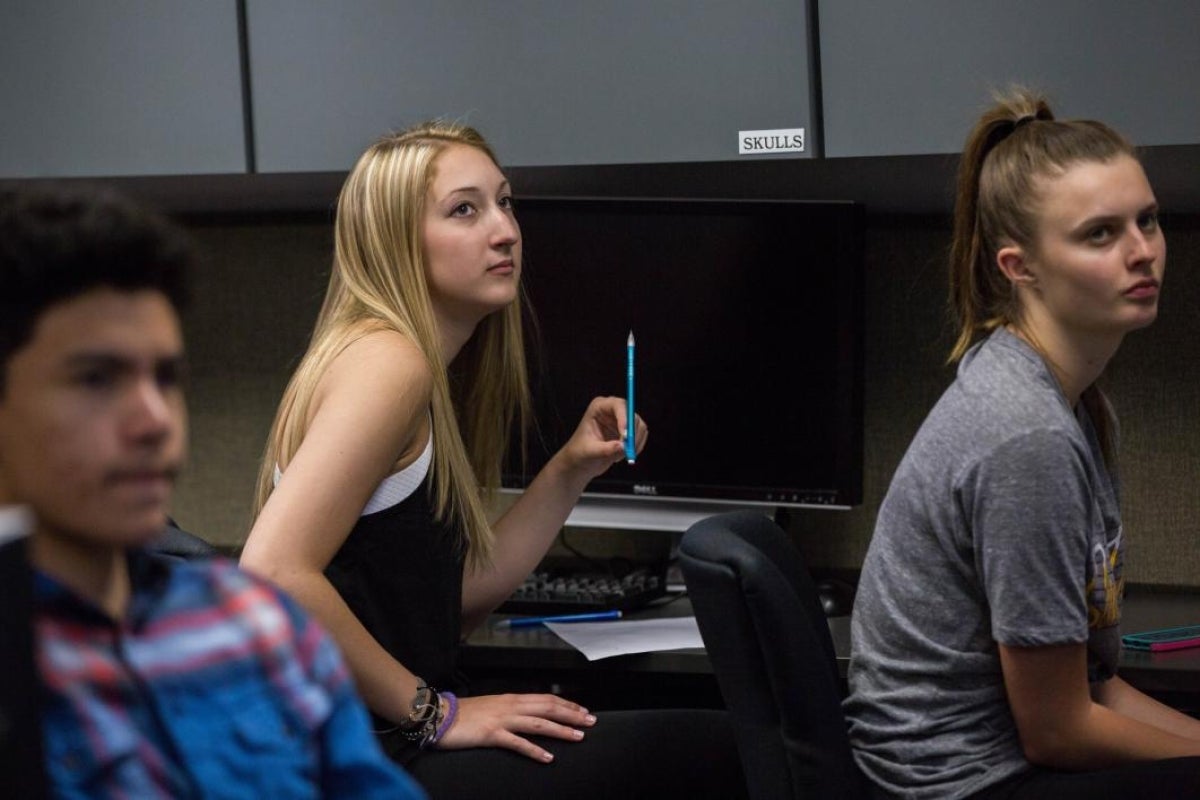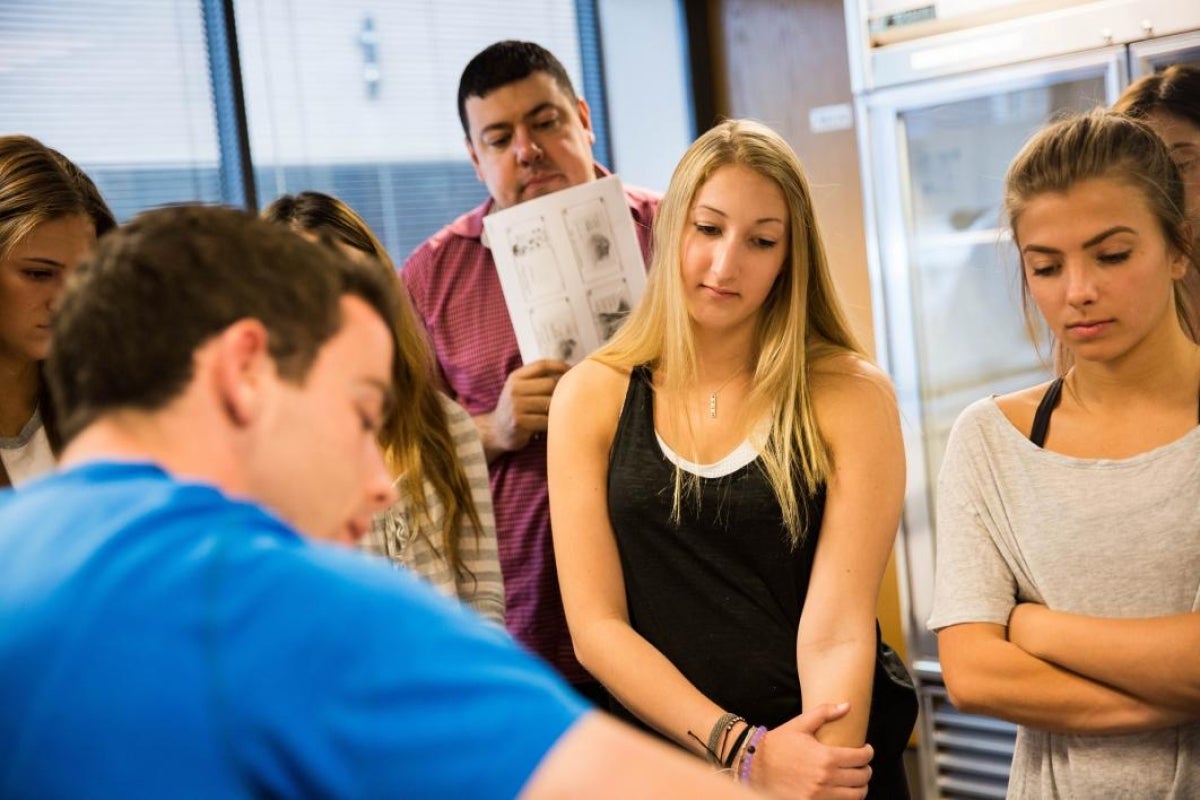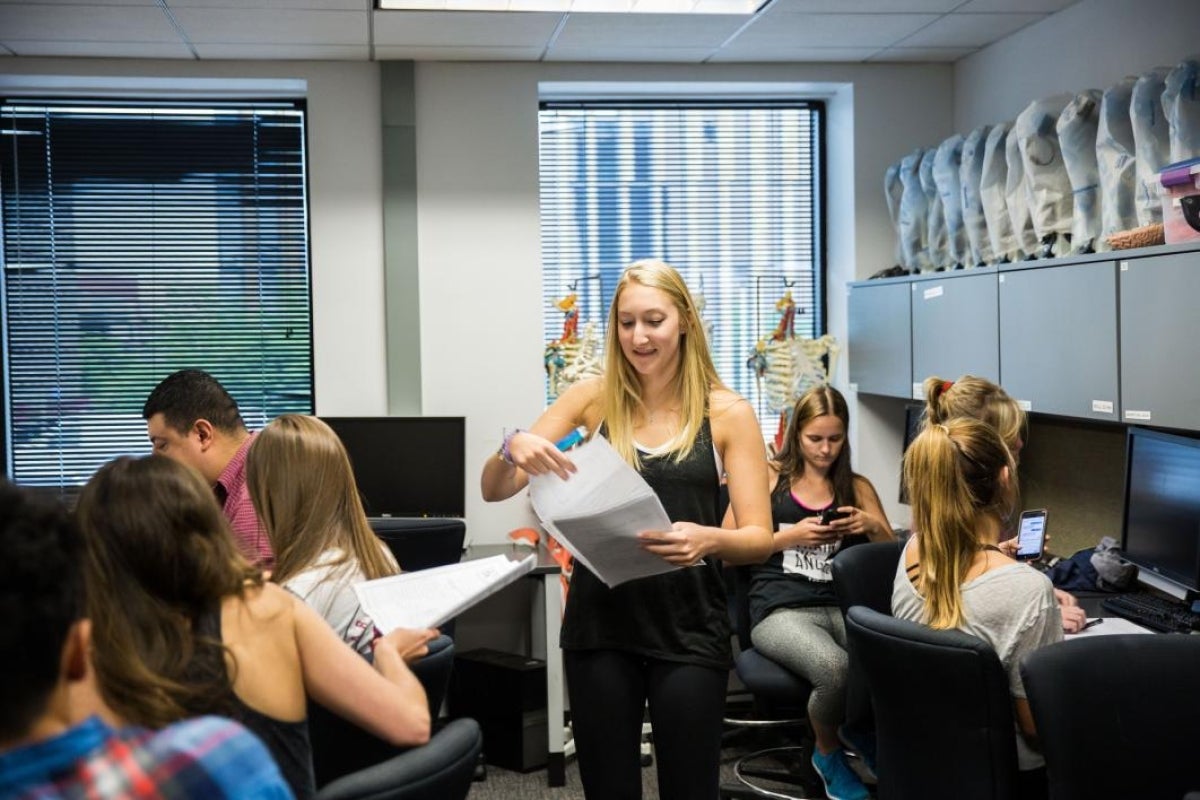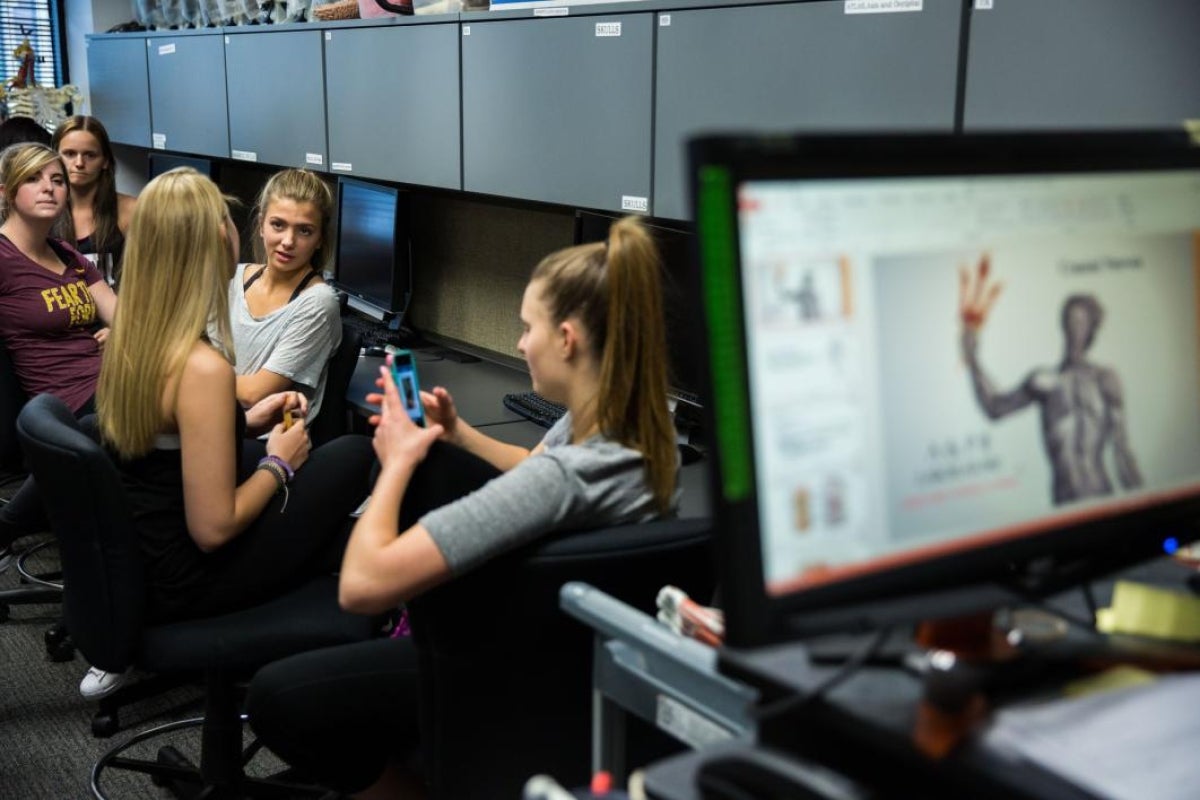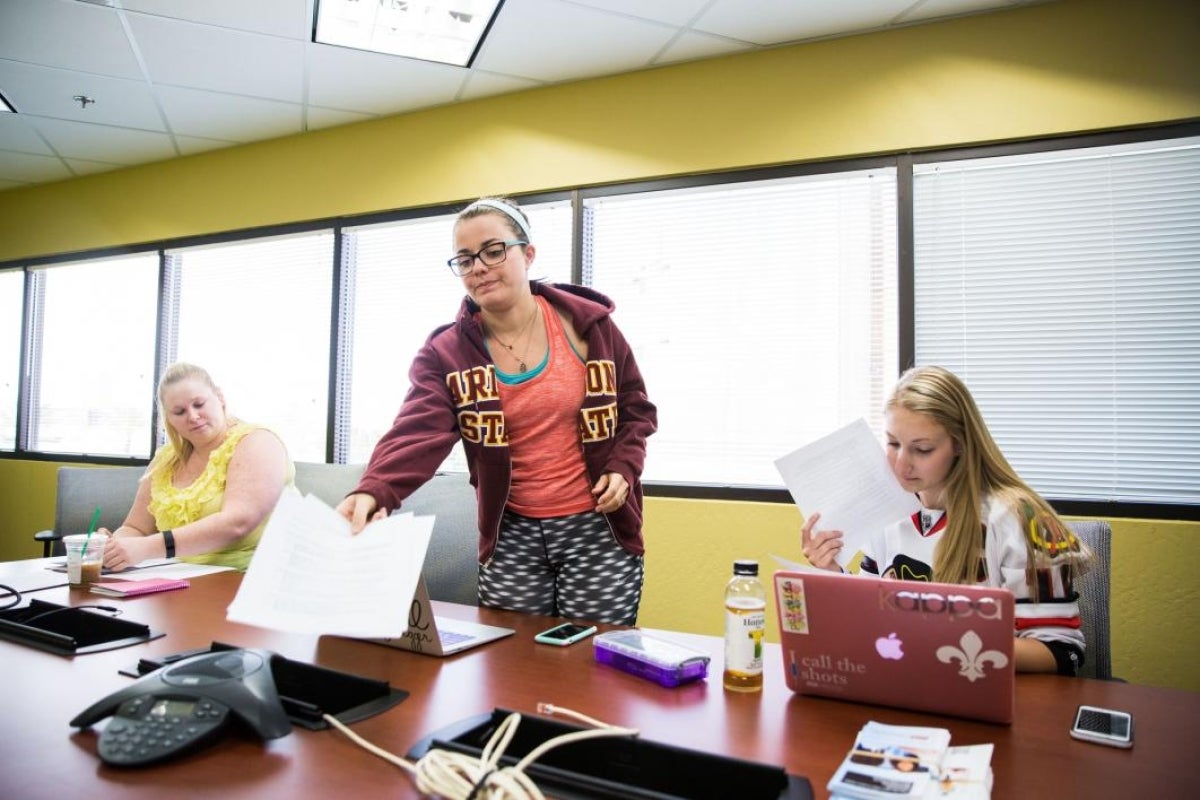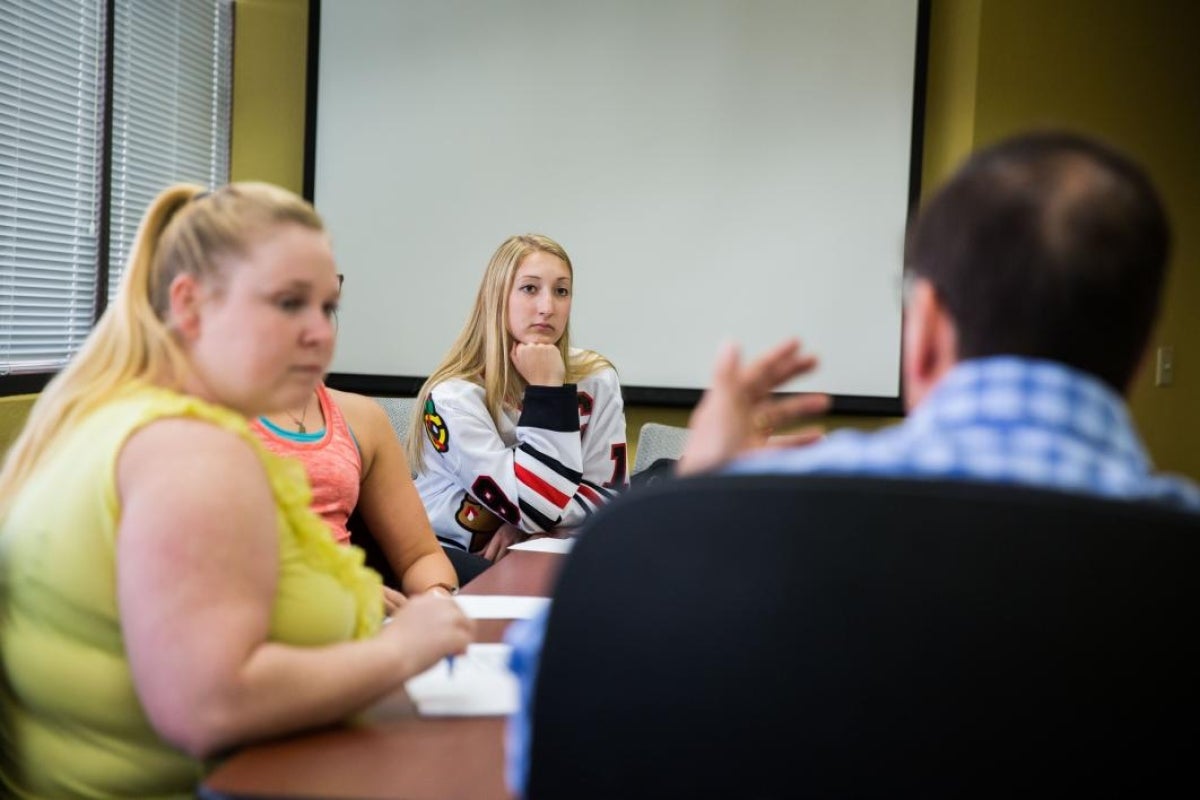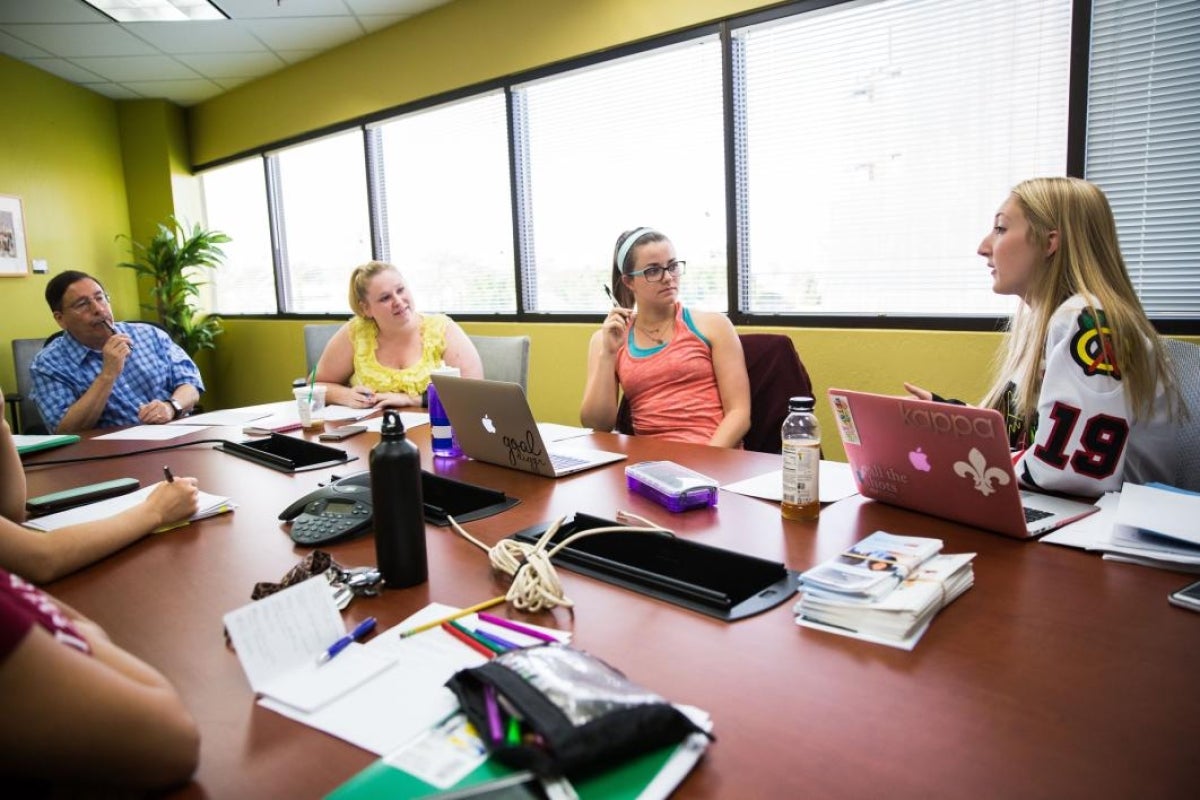Editor's note: In "Year One: Life at ASU," we follow five freshmen through their first year at Arizona State University in an occasional photo series. This is the latest for one of them, Hannah Kieling.
Training to be a nurse means learning all about the human body and its many functions; in Biology 201, students such as Hannah Kiesling covered the cranial nerves and prepared for upcoming exams. The instructor, Matt Speer, also took them for a visit to the cadaver lab, demonstrating the muscle anatomy of the arm.
Kiesling is the only freshman research intern in a study with Felipe Gonzalez Castro, studying how the “Keepin It Real” substance-abuse prevention program has been adapted at a local level with teachers in Pennsylvania and Ohio. Through her work there, Kiesling has learned to interview participants in a research study without influencing answers through body language or responses, as well as how to do independent work with upperclassmen and graduate students in a professional environment.
See previous entries in this series:
More Health and medicine

Human-centered technology embraced at ASU Digital Health Summit
Digital health technology is advancing at lightning speed, but the innovation requires a human touch to ensure that everyone benefits from the advances, according to speakers at the inaugural ASU…

Ancient DNA could help to understand recent tuberculosis outbreak in Kansas
For over a year, Wyandotte and Johnson counties in Kansas City, Kansas, have been fighting an outbreak of tuberculosis (TB) that has claimed two lives and infected nearly 150 residents. The…

ASU researchers propose unifying model of Alzheimer’s disease
In a groundbreaking theory, scientists at Arizona State University's Biodesign Institute propose a unifying explanation for the molecular chaos driving Alzheimer's disease. The condition causes…
